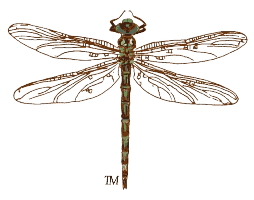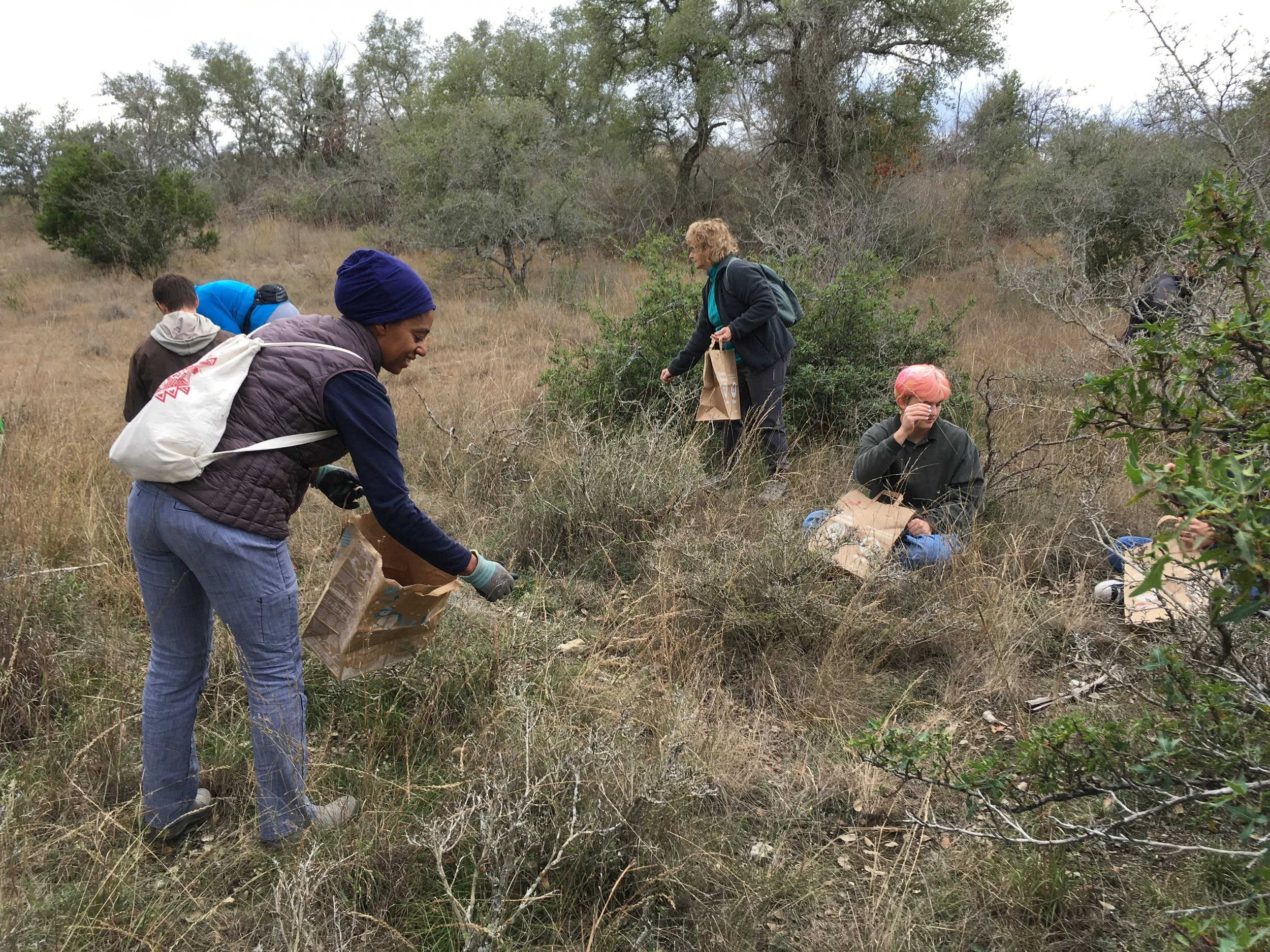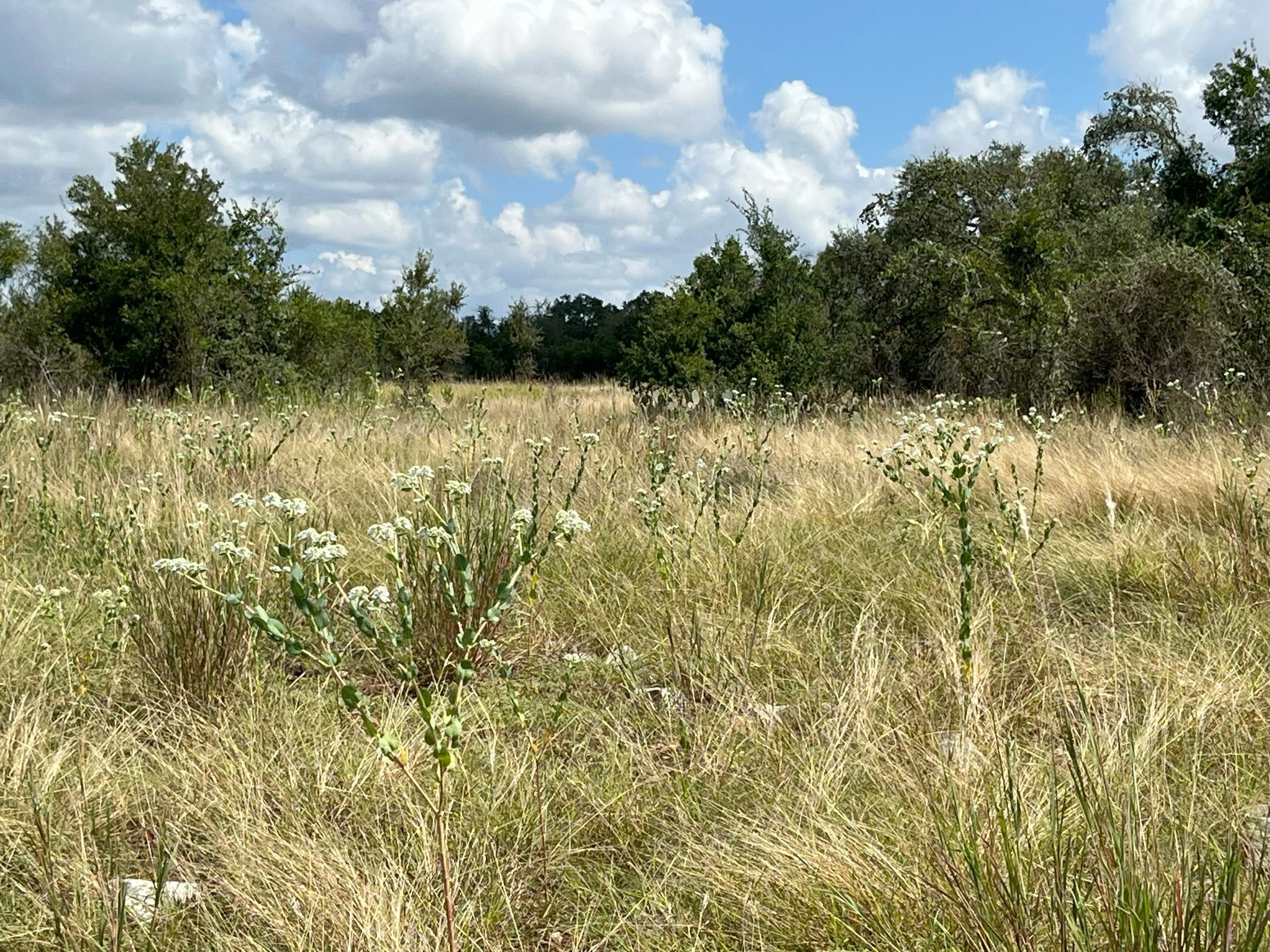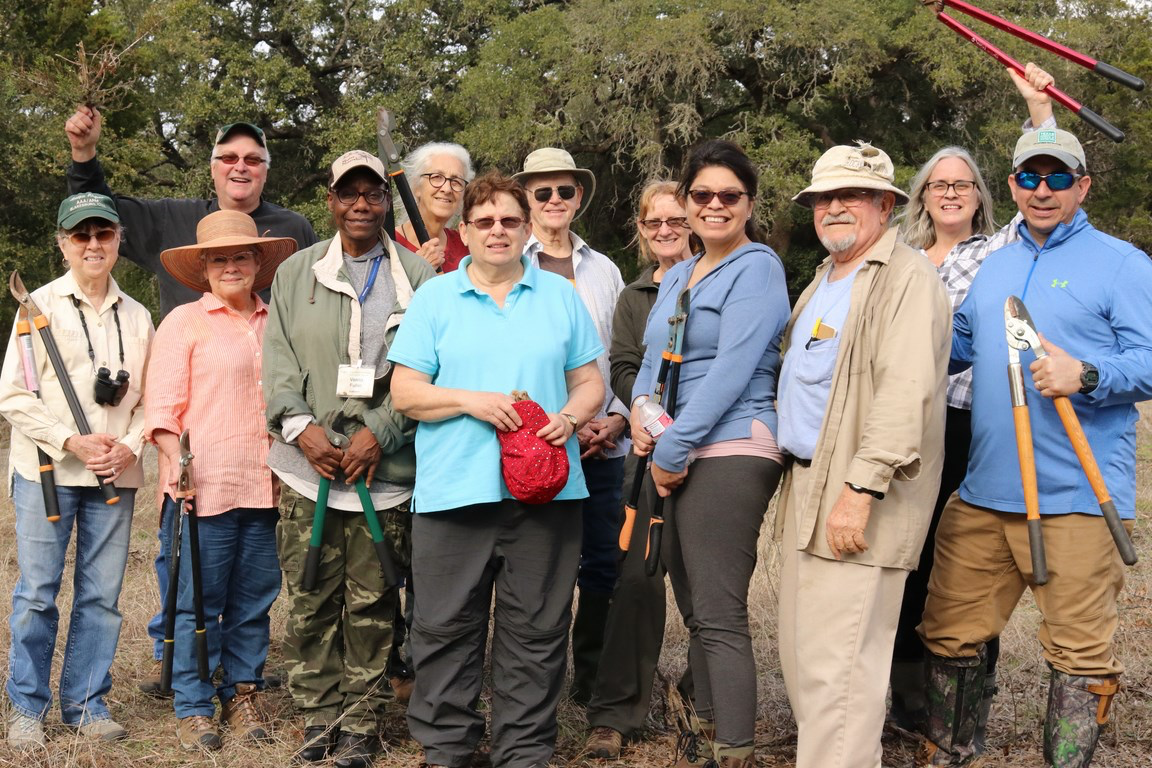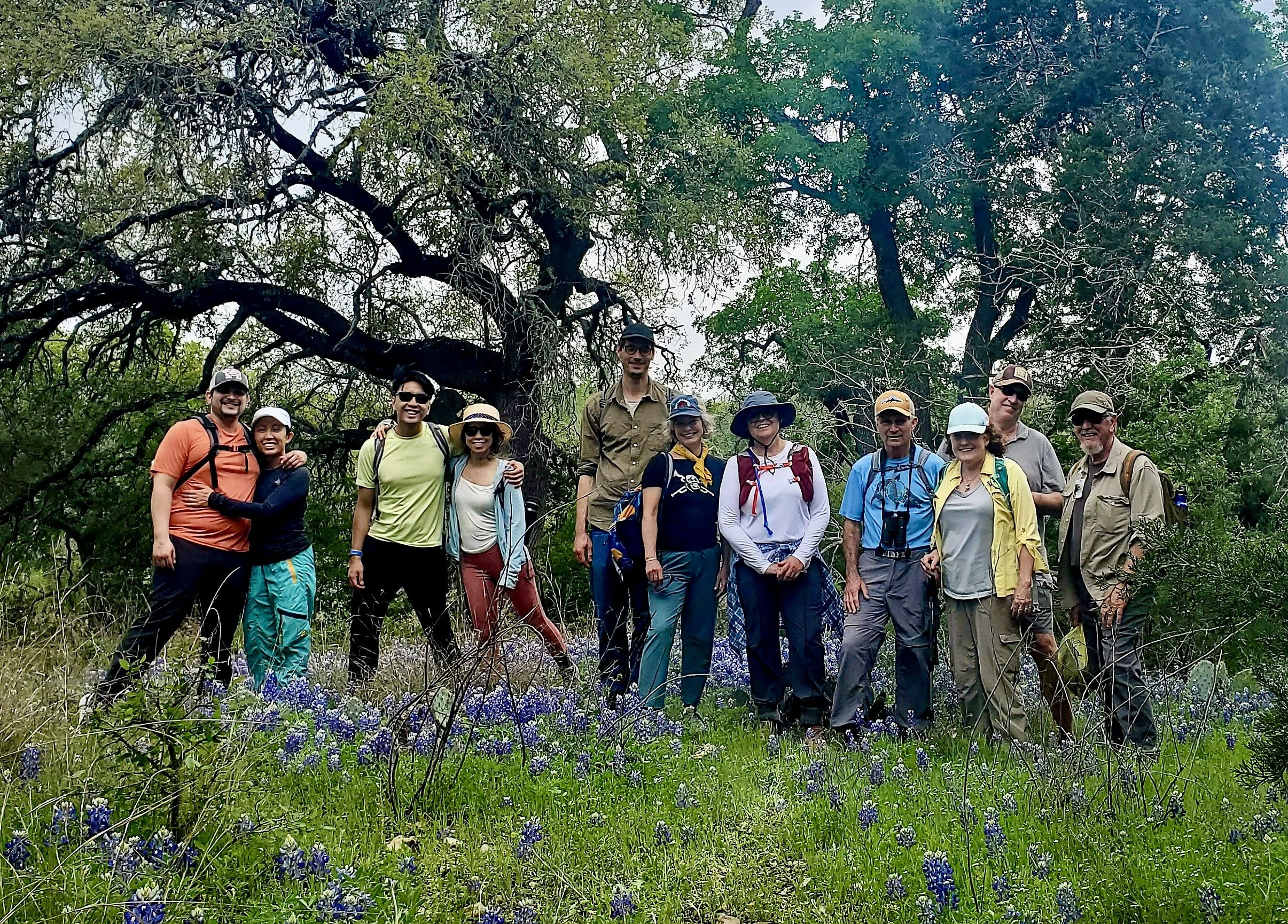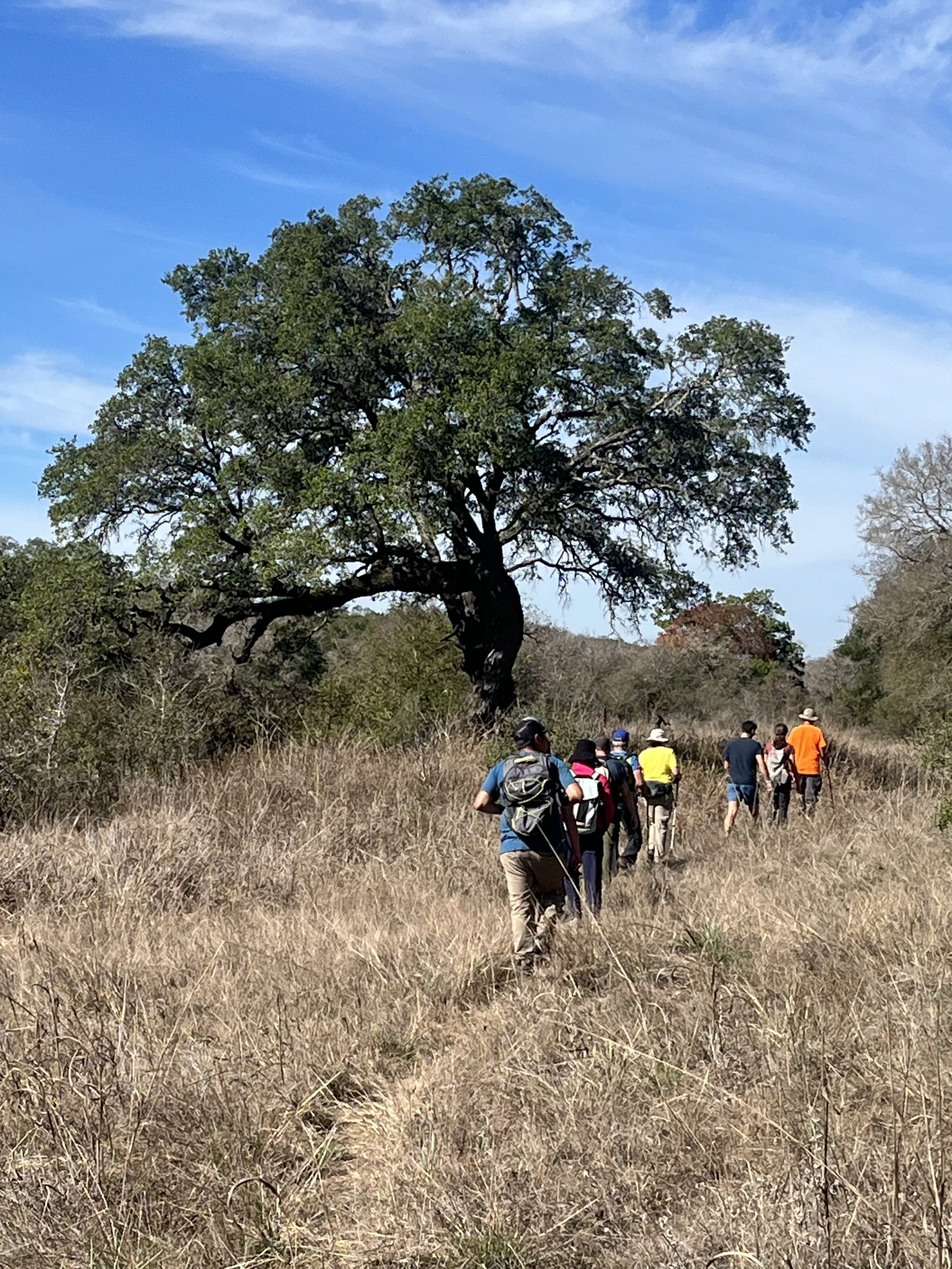Austin Water’s Wildlands
Project RM426
Photo courtesy Dick McBride
Dick McBride
I have been volunteering on Austin Water’s Wildlands for all of my 15 years as a Hays County Master Naturalist. It was one of the first projects I found, and I have enjoyed many pleasant days on the various properties.
Austin Water has two environmental programs within the Wildland Conservation Division (the Wildlands): the Water Quality Protection Lands (WQPL) and the Balcones Canyonlands Preserve (BCP). Their missions are very different. The WQPL strives to protect the groundwater that feeds Barton Springs, while the BCP works to protect endangered species.
The WQPL “safeguards groundwater in the Barton Springs segment of the Edwards Aquifer through the conservation and restoration of large connected natural areas.”
The dark green area in this map represents the recharge zone for the Barton Springs segment of the Edwards Aquifer. The medium blue shapes are properties owned and managed by Austin Water, and the light blue shapes are privately owned but with conservation easements preventing development.
Much of this land was formerly ranchland, and overgrazing, along with other poor land management practices, often damaged the land. But this combination protects 30% of the Barton Springs recharge zone.
Map courtesy Collecting Seeds to Protect an Aquifer, September 2023 Hays Humm
Much of the WQPL is in Hays County, making it a logical volunteering opportunity for Hays County Master Naturalists (HCMNs). The BCP is in West Austin, Travis County, and as part of the Wildlands program, it is also approved for HCMN volunteering. There are a lot of birding activities on the BCP and land restoration projects there as well.
Seed Collecting
Restoration of the land to bring back original and more diverse vegetation is ongoing and involves prescribed burns to reduce woody encroachment. Volunteers do not participate in the prescribed burns but actively help with reseeding of burned areas, as well as the collecting of the seeds that are used.
My goal of improving my plant identification keeps me collecting seeds. Seeds are not available all year, and we rarely collect in the winter. Our primary collections take place in summer and fall, starting with cool-weather grass seeds in May. We collect seeds from more than 100 species of plants!
Photo courtesy Dick McBride
Photo courtesy Dick McBride
Photo courtesy Dick McBride
Photo courtesy Karlee Taylor
Many plants are dispersal-limited, and volunteers play a key role in improving diversity on these lands through seeding efforts.
Historically, native prairies burned frequently. Grasses and other plants are adapted to this and rebound quickly, so there is no need to reseed. Prescribed fire is the use of fire to meet a specific objective, using a detailed plan, to restore or maintain the health of a particular ecosystem. Our main fire objectives are to reduce brush and invigorate native grasslands.
Fire also prepares sites for the planting of grass seeds and reduces the abundance of some introduced invasive plants. Fire is an essential tool for maintaining existing grassland, expanding areas that are mostly grassland, and for removing encroaching brush less than 4–6 feet tall.
Seed Preparation & Propagation
Much of the seed that we collect requires cleaning before we can put it down for reseeding. Seed cleaning is often a job for the winter. Onion Creek, one of the WQPL properties, has a ranch house combined with a new nursery. Basic horticulture is conducted on Fridays. Underrepresented species are also cultivated with the goal of increasing populations and diversity.
Onion Creek Property Ranch House Photo courtesy Dick McBride
Nursery Photo courtesy Dick McBride
Seed Cleaning Photo courtesy Karlee Taylor
Nursery Scenes
Photo courtesy Karlee Taylor
Photo courtesy Dick McBride
Photo courtesy Karlee Taylor
Photo courtesy Karlee Taylor
Photo courtesy Water Quality Protection Lands, October 2023 Hays Humm
Brush Management
In addition to the use of prescribed fire and seed-based restoration, we sometimes cut small brush by hand before seeding native species to help manage woody encroachment on grassland savannas
Hays County Master Naturalists from various classes. Photo courtesy Dick McBride
Hike Guiding
Hike guiding on Wildlands properties is another volunteer opportunity. A Wildlands hike guide training is held once per year, typically in August. There is a wide variety of venues on the Water Quality Protection Lands and the Balcones Canyonlands Preserve properties. Some evening hikes are offered in the summer at a few sites, and Bug Hikes are occasionally available. Hikes are usually conducted Saturdays and Sundays.
Photo courtesy Pat Heintz
Photo courtesy Russell Sanders
Photo courtesy Pat Heintz
Photo courtesy Dick McBride
Photo courtesy Pat Heintz
Photo courtesy Karlee Taylor
Join us on the Wildlands!
Signing up to volunteer for Austin Water’s Wildlands is done online. Volunteers do not have to be Master Naturalists, and many other volunteers are from Hays or Travis counties. Go to austintexas.gov/wildlandevents to find the list of volunteer activities and guided hikes. You sign up by selecting the activity you wish to attend. You will receive a confirmation and instructions.
Photo courtesy Karlee Taylor
